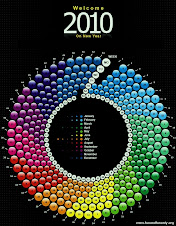THE CUSTOMER SATISFACTION EQUATION:
Improving performance or lowering expectations?
By J. N. Halm
Customer Satisfaction = Performance
Expectations
A few days ago, I decided to have ‘waakye’ for brunch-I believe many readers would appreciate that feeling, especially those who had, at one time or the other, caught the ‘kobolo’ bug. That feeling for some good old ‘waakye’ grabs you so tightly that you have no choice but to hit the road in search of that irresistible rice and beans combination. Pretty soon after I set out, I came across a 21st century ‘waakye’ seller-you know, the kind who has the food in a huge food flask inside a glass cage with everything so neatly arranged. I got attracted immediately and my expectations shot to a high. This must be good, I thought to myself.
I bought as much as I thought would satisfy my hunger and went back home to feast. However, I was bitterly disappointed with the ‘performance’ of the food. I believe it had to do with the ‘pepper’ or sauce. One thing I know is that ‘waakye’ is all about the pepper. This woman’s pepper just did not meet the standard of those I had enjoyed growing up in the suburb of Dansoman. I must add that the we’le’ or tendered cowhide was also quite disappointing. (Readers can think the worse of me at this time, but it’s all good!). In short, my expectations had not been met and I was a very dissatisfied customer. I have no plans of paying that woman any visits in the future.
Customer Satisfaction
Many business leaders would agree that knowing what keeps customers satisfied and doing that very thing always is what business success is all about. Good managers realise that a customer, who makes a purchase or patronises a service, comes into that transaction with a certain expectation. A customer will never be satisfied if the performance of the product or service does not meet that expectation. If the performance of the product-service offering equals the customer’s expectations, that customer walks away satisfied, in the very least. When the product’s (or service’s) performance exceeds expectations, customers become very happy. This is a basic understanding that I am sure that every business person knows.
What this relationship indicates is that to keep customers very satisfied, a business must do one of three things: It must either work to make certain that the performance of its offering (products and/or services) exceed customers’ expectations. The business can also work at lowering the expectations of customers about its offering so that customers are satisfied with the best that the business can offer. Lastly, the business can work at lowering expectations whilst at the same time improving its performance.
Lowering Customer Expectations
Of all the three options, I believe the easiest one for businesses is the lowering of customers’ expectations. I am well aware of the demerits of this strategy, especially in the face of stiff competition but I am convinced that it is better to leave customers satisfied than dissatisfied. If in attempt to match up to the competition you create high expectations about your offering, you end up putting yourself in a position where you might not meet those expectations thereby guaranteeing massive customer dissatisfaction.
In attempting to win my custom, the ‘waakye’ seller should have rather resorted to lowering my expectations rather than increasing it. I went into the transaction expecting something out of this world of this world but I never had that. If I had been expecting something ‘normal’ and had received something ‘normal’ I would not have complained. Anyway, I cannot blame her too much-she was acting with the knowledge available to her. How does a customer go about lowering expectations?
The 7 Elements of Expectations
The first step in lowering customer expectations is in understanding how those expectations are formed in the first place. When it comes to the causes of customer expectations, experts agree that there are seven main elements that create and modify expectations.
• Past Experience
“Once bitten, twice shy” so goes the old saying. When it comes to what to expect from a product or service, a customers’ past experience is, almost always, the best teacher. My past experience with some wonderful ‘waakye’ in the past had conditioned my mind to expect a certain standard. Participants at the ExSellers International seminars all have certain expectations when attending new programmes and so we make conscious efforts to ensure that we always surpass the standards set for all programmes. This is a challenge to all businesses throughout the world-having to consistently meet and surpass old standards.
• The firm
The information I got from the set up of the ‘waakye’ seller also fuelled my expectations. If she had taken all that time to put up such a pleasant, eye-catching display, then the food had to be very good, or so I thought. That experience even made me believe that the not-too-clean nature of the ‘waakye’ I used to enjoy had something to do with the wonderful taste. However, that is another matter all together.
The kind of advertising a firm puts out has a huge effect on the expectations of patrons. I am planning to take on the issue of advertising and customer service in a separate article and so would not want to go into details this week. It is however important to know that, customers’ expectations are formed, to a large extent, by the kind of advertising the firm does.
• Other customers
I am sure the absence of a long queue at that ‘waakye’ seller’s booth should have given me a signal that all was not well. Better still, I should have even asked around before making the purchase. Feedback from other customers is another way customers form their expectations about products and services. Customers do not mind so much about the consequences of inconsequential purchases such as my ‘waakye’ but when it comes to important purchasing decision such as buying a house or a car, customers make it a point to “ask around.”
• The Competition
Customers are ‘comparers’, like it or not. We are all in the habit of comparing what the competition is offering before making a purchasing decision. Businesses know that and that is why they are trying to outdo each other on the market just to get our attention. The intensity of the competition in these times is enough proof of this fact. The most interesting industry to study this phenomenon is the telecommunications industry. One network brings out a novel service one day and the very next day, another network pops up with the same service or better still, an upgrade of that service. At this point in time, I do not envy whoever is in charge of introducing GLO into the Ghanaian market. Our expectations are so high that I doubt if they would ever be able to meet them.
The banking sector is also another industry experiencing this intensity of competition. One bank comes out with an innovative product and pretty soon, all others follow suit. The actions of the competition have a nice way of shaping the expectations of customers before they even try the product. I can only imagine what a new entrant into the banking sector would have to do to sway Ghanaians like Standard Trust (now UBA) did a couple of years ago.
• The Media
The power of the media to shape minds is one that has been studied for centuries. Theories and principles abound on the potency of the media to shape the minds of people. The story of contaminated flour being used in the production of certain of brand of biscuits by ace investigative journalist, Anas Aremeyaw Anas had a tremhttp://www.blogger.com/img/blank.gifendous effect on the expectations of consumers of that brand of biscuit. I am also of the opinion that some of the causes of the demise of the national airline had to do with the image the media had created about the airline. We all knew what to expect from Ghana Airways just by listening to the news.
• Regulators
The actions of regulators also have an effect on the expectations of customers. I find the insurance industry an interesting case study for this phenomenon. One day, we hear one company is AA rated and pretty soon, others were running for their AAs and flaunting them in the faces of those who did not have them.
• Consumer Groups
In Ghana, it seems the Consumer Protection Agency is yet to attain its full potential. I am sure that very soon Ghanaians would begin to recognise the importance of that very important body to consumerism in this country. I wonder how many people turned off their mobile phones in protest as urged by the CPA last time round.
• Newer technology
A customer who has had the privilege of experiencing a certain technology in one product will expect something akin to that in a similar product. These days it is expected that all new mobile phones should have at least some basic technologies. With the advent of the phones from TECNO, rLG and G-TIDE, it seems all phones should accommodate double SIM cards and have, in the very least, some FM radio functions.
I believe with this knowledge of what informs a customer’s expectations, business people will manage customer expectations better so as not to leave their cherished customers in a state of dissatisfaction. The aim of all businesses should be that every customer that enters into any interaction or transaction with the business must, in the very least, leave satisfied. Customer satisfaction is the key to long-term business success; anything other than that is definitely out of the equation.
Tuesday, July 27, 2010
Subscribe to:
Post Comments (Atom)



No comments:
Post a Comment